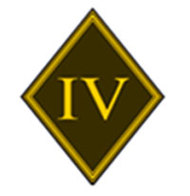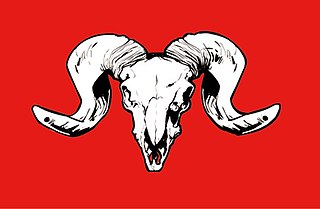
The Royal Regiment of Artillery, commonly referred to as the Royal Artillery (RA) and colloquially known as "The Gunners", is one of two regiments that make up the artillery arm of the British Army. The Royal Regiment of Artillery comprises thirteen Regular Army regiments, the King's Troop Royal Horse Artillery and five Army Reserve regiments.

The Battle of Plassey was a decisive victory of the British East India Company, under the leadership of Robert Clive, over the Nawab of Bengal and his French allies on 23 June 1757. The victory was made possible by the defection of Mir Jafar, Nawab Siraj-ud-Daulah's commander in chief. The battle helped the British East India Company take control of Bengal in 1772. Over the next hundred years, they continued to expand their control over vast territories in rest of the Indian subcontinent, including Burma.
The 48th Field Battery, Royal Australian Artillery was an artillery battery of the Australian Army. The battery traced its lineage back to a unit that was formed for service during the First World War. Assigned to the 9th Brigade, it was located at Keswick Barracks in South Australia until mid-2013 when it was amalgamated with the Launceston-based 16th Field Battery, to form the 6th/13th Light Battery.

The 103rd Regiment of Foot (Royal Bombay Fusiliers) was a regiment raised in 1662. It transferred to the command of the Honourable East India Company in 1668 and to the command of the British Army in 1862. Under the Childers Reforms it amalgamated with the 102nd Regiment of Foot (Royal Madras Fusiliers) to form the Royal Dublin Fusiliers in 1881.

The 4th Regiment Royal Artillery is a regiment of the Royal Artillery in the British Army. It was formed in 1939 as 4th Regiment Royal Horse Artillery, before being redesignated in 1961.

16 Regiment Royal Artillery is a regiment of the Royal Regiment of Artillery in the British Army. It currently serves in the Ground Based Air Defence role and is equipped with the Sky Sabre air defence missile system.

The Bengal Army was the army of the Bengal Presidency, one of the three presidencies of British India within the British Empire.
J Battery Royal Horse Artillery are a Close Support Battery of 3rd Regiment Royal Horse Artillery. They were currently based in Caen Barracks in Hohne, Germany.
M (Headquarters) Battery Royal Horse Artillery is the Headquarters Battery of 3rd Regiment Royal Horse Artillery, part of the Royal Horse Artillery of the British Army. As of 2015, it is based at Albemarle Barracks, Northumberland, England. The Battery Commander is Maj B Johnston RHA.
Thomas Adams, British Army major, posthumously promoted to Brigadier-general based on accounts of his defence of the British position in Bengal in 1763.

The Battle of Chandannagar (Chandernagore) was a successful attack on the French-held settlement of Chandernagore by a British force under the command of Robert Clive and Charles Watson on 23 March 1757 during the Seven Years' War. Chandernagore remained under military occupation by the British until the signing of the Treaty of Paris in 1763, which brought an end to the war.
In September 1939, the British Army was in process of expanding their anti-aircraft and mobile assets. Among these new changes was the formation of Anti-Aircraft Command which was formed on 1 April 1939, and the 1st Armoured Division formed in 1937. The list below will include the British Army units, colonial units, and those units which were in the process of formation.
30 Battery Royal Artillery is a unit of the British Army founded in 1759, and currently part of 16 Regiment Royal Artillery

The 1st Artillery Brigade was a support formation of the British Army from 1961-77 and from 1997. Part of the 3rd Division, it oversaw all army close support artillery and deep fires units. Under the Future Soldier programme, the brigade merged with 1st Armoured Infantry Brigade to form 1st Deep Reconnaissance Strike Brigade Combat Team.

The Joint Ground Based Air Defence Headquarters or JtGBAD HQ was a joint (non-deployable), force-generating British military formation under the operational command of RAF Air Command, sitting under No.1 Group. It was formed circa 2000 and disbanded in 2019 in favour of 7th Air Defence Group.
G Parachute Battery Royal Horse Artillery is a close support battery of 7th Parachute Regiment Royal Horse Artillery, part of the Royal Horse Artillery of the British Army, currently based in Merville Barracks in Colchester.
I Parachute Battery Royal Horse Artillery is the Headquarters battery of 7th Parachute Regiment Royal Horse Artillery, part of the Royal Horse Artillery of the British Army, currently based in Albemarle Barracks in Newcastle Upon Tyne.
H Battery Royal Horse Artillery is a battery of 1st Regiment Royal Horse Artillery, part of the Royal Horse Artillery of the British Army. As of 2015, it is based at Albemarle Barracks, Northumberland, England and is equipped with GMLRS.
T Battery Royal Artillery is an air defence battery of the Royal Artillery that serves with the British Army's 12 Regiment Royal Artillery. It is stationed at Baker Barracks, Thorney Island, West Sussex.

7th Air Defence Group is a formation of the British Army and part of 3rd Division. It is responsible for all the army's ground based air defence assets. All of the organisation's subordinate units are drawn from the Royal Regiment of Artillery. The headquarters are located at Baker Barracks, Thorney Island.












